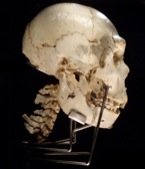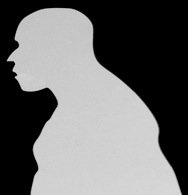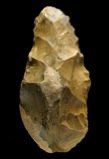Neandertals
Irish Neandertals!
03/12/09 21:23 Filed in: Palaeoanthropology
This abstract from a 1961 paper made me smile:
Casey AE, Franklin RB. 1961. Cork-kerry Irish compared anthropometrically with 139 modern and ancient peoples. Irish Journal of Medical Science. 36 (9).
Living Cork-Kerry Irish were compared with 139 modern and ancient peoples using 36 factors, 14 blood groups, 3 skin, hair and eye pigmentations and 22 physical measurements. The method was a form of multiple correlation in which the class interval for each factor was one-half the standard deviation, and numerical values allocated to each half-standard deviation. The Irish, Northern Scots, Icelanders, S.W. Norse, N. Dutch and Frisians form a racial entity with 97 per cent. inter-correlation and very little change during the past 1,000–4,000 years. There is a high correlation with the ancient Scythians substantiating the Irish legends of descent from the kings of Scythia. There is a substantial mixture of upper palaeolithic and Neanderthal man in the north-western perimeter of Europe, exemplified by the people of Cork and Kerry, a mixture not shared by the American Indians, the Australian Aborigines, and by the Bushmen and Pygmies of Africa. There is a good possibility that the large frame, red hair, blue eyes and white skin of West Europe was contributed by upper palaeolithic and Neanderthal men.
Casey AE, Franklin RB. 1961. Cork-kerry Irish compared anthropometrically with 139 modern and ancient peoples. Irish Journal of Medical Science. 36 (9).
0 Comments
Did Neandertals and modern humans interbreed?
27/10/09 18:36 Filed in: Palaeoanthropology
Ever since William King proposed the taxonomic designation Homo neanderthalensis in 1864, there has been intense debate as to whether Neandertals represent a distinct species from us. Species, as defined by the biological species concept, are populations of organisms that can potentially interbreed and have fertile offspring. It is believed that the lineage leading to Neandertals and modern humans split sometime around 500,000 years ago. For most of their existence Neandertals and early modern humans were geographically isolated (and by extension reproductively isolated) from one another. The big question is whether they could have produced viable offspring when they met.
Today, most researchers acknowledge that some sexual encounters could have occurred between Neandertals and modern humans. The more interesting question is how common were these encounters and did they leave their mark on the modern gene pool. Undoubtedly, modern humans and Neandertals would have recognised each other as fellow humans but this does not mean that they would have acted humanely to each another. Countless social and psychological studies have shown humans to have a very strong "us versus them" mentality, that no doubt also existed in our ancestors. It is unlikely that modern humans and Neandertals had an easy relationship. Most sexual encounters that took place between the two were likely opportunistic and probably involved enslavement and rape. Read More...
Today, most researchers acknowledge that some sexual encounters could have occurred between Neandertals and modern humans. The more interesting question is how common were these encounters and did they leave their mark on the modern gene pool. Undoubtedly, modern humans and Neandertals would have recognised each other as fellow humans but this does not mean that they would have acted humanely to each another. Countless social and psychological studies have shown humans to have a very strong "us versus them" mentality, that no doubt also existed in our ancestors. It is unlikely that modern humans and Neandertals had an easy relationship. Most sexual encounters that took place between the two were likely opportunistic and probably involved enslavement and rape. Read More...
Homo heidelbergensis and the muddle in the middle
10/10/09 19:45 Filed in: Palaeoanthropology

At the conference, much attention was focused on the Middle Pleistocene "muddle in the middle" [3], particularly the role of Homo heidelbergensis in hominin evolution. While H. heidelbergensis possesses both archaic and derived traits intermediate between H. erectus and later members of the Homo genus, it lacks uniquely derived traits or autapomorphies, which are a prerequisite for defining a species.
H. heidelbergensis has traits that have been interpreted as nascent Neandertal autapomorphies, leading some researchers to propose that there was a continuous evolution of Neandertals [4-6]. This accretion model would make H. heidelbergensis a chronospecies on the continuum of the Neandertal lineage, a view championed by Jean-Jacques Hublin. The accretion model proposes that Neandertals evolved by anagenesis, i.e. non-branching evolutionary change. Read More...
Who made the Aurignacian?
30/05/09 23:40 Filed in: Palaeoanthropology
Until recently, it was largely assumed that the Aurignacian was contemporaneous with the arrival of anatomically modern humans in Europe sometime around 40,000 years ago. This industrial complex is named after the site of Aurignac in southern France and is found throughout Europe and southwest Asia. The evidence for an association between modern humans the Aurignacian has been less than clear cut.
For most of the last century, the prevalent view among archaeologists was that Neandertals only made Mousterian tools. However, the discovery of the St Césaire 1 Neandertal skeleton and the Neandertal remains from Arcy-sur-Cure with Châtelperronian industry put paid to this idea. Châtelperronian tools show a mix of features otherwise found in the Mousterian and Aurignacian industries. What was particularly surprising about the Châtelperronian culture was not only the lithics but also the manufacture of bone tools and personal ornaments. At the site of Arcy-sur-Cure archaeologists found pierced teeth, ivory, shell, and bone in the Châtelperronian layers. The Szeletian industry of central Europe and the Uluzzian industry of Italy may also be related to the Châtelperronian.
Read More...
For most of the last century, the prevalent view among archaeologists was that Neandertals only made Mousterian tools. However, the discovery of the St Césaire 1 Neandertal skeleton and the Neandertal remains from Arcy-sur-Cure with Châtelperronian industry put paid to this idea. Châtelperronian tools show a mix of features otherwise found in the Mousterian and Aurignacian industries. What was particularly surprising about the Châtelperronian culture was not only the lithics but also the manufacture of bone tools and personal ornaments. At the site of Arcy-sur-Cure archaeologists found pierced teeth, ivory, shell, and bone in the Châtelperronian layers. The Szeletian industry of central Europe and the Uluzzian industry of Italy may also be related to the Châtelperronian.
Read More...



